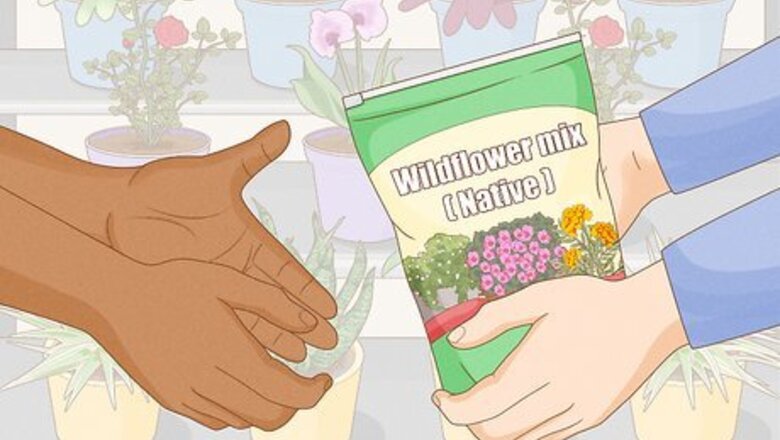
views
Planting Bee-Friendly Flowers

Plant flowers native to your area. Bees evolved with wildflowers, and the bees in your area will respond best to the flowers they "grew up with," so to speak. What flowers are native to your area? If you're not sure, go to a local gardening store and ask for a native wildflower mix, or do some research online before ordering seeds. If you don't want your garden to be completely wild, choose at least a few species that will complement the rest of your garden and attract bees. The more wildflowers you plant, the more bees you'll attract, and the better your garden will grow. Planting wildflowers is beneficial in more ways than one! Aim to plant a great diversity of flowers with a range of shapes and textures, not just one or two types. The more diverse your garden is, the better it will support different bee species as well as other beneficial insects and wildlife.
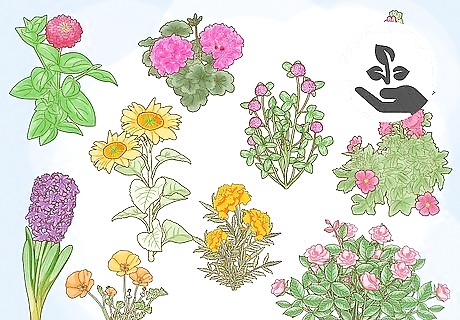
Plant flowers with single petals. Flowers with a single row of petals, rather than flowers with more than one row, are more attractive to bees. Single-petaled flowers have more pollen than other flowers, so they provide a little more food for hungry honey bees. It's also easier for bees to reach the pollen when there is only one row of petals to crawl across. Here are a few flowers bees particularly love: Asters Calliopsis Clover Cosmos Crocuses Dahlias Foxglove Geraniums Hollyhocks Hyacinth Marigolds Poppies Roses Snowdrops Sunflowers Zinnias
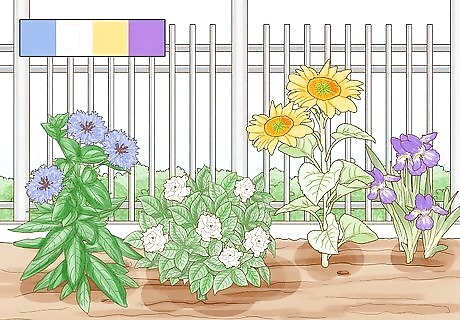
Plant yellow, white, blue and purple flowers. These colors attract bees more than pinks, oranges and reds do. Your garden doesn't have to be exclusively yellow, blue and purple, but having a good amount of flowers with these hues will keep the bees buzzing in your yard.
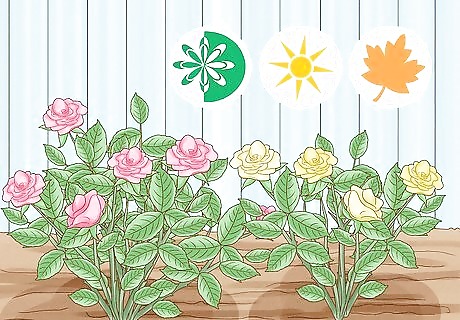
Plant flowers that bloom in sequence. If all of your flowers bloom at the same time, the bees will have a feast, then run out of food before the summer's end. Plant a variety of flowers that will bloom throughout the spring, summer, and into the fall to keep the bees in your neighborhood fed and happy.
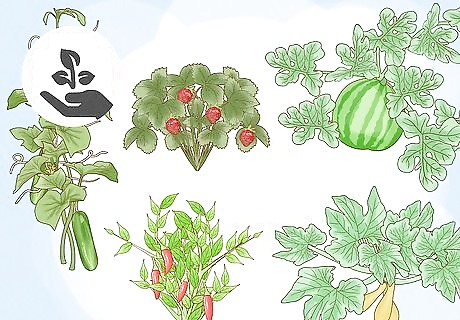
Plant flowering vegetable and fruit plants. Berries, melons, squash, cucumbers, and fruit trees, especially cherry trees, all produce fragrant flowers and fruit that are attractive to bees. Bees are beneficial to these plants, so providing them in your garden will be a treat for you both. Bees adore these fruits and vegetables: Blackberries Cantaloupe Cucumbers Gourds Cherry trees Peppers Pumpkins Squash Strawberries Watermelons
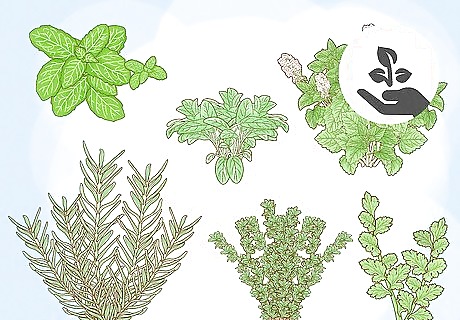
Plant herbs that attract bees. If you have space for a little herb garden, that's another great way to attract bees. Mints attract certain types of bees, as do sage, rosemary, thyme, bee balm, and a number of other herbs. Here's a list of herbs that bees love, for your reference: Bee Balm Borage Catnip Coriander/Cilantro Fennel Lavender Mints Rosemary Sage Thyme
Making Your Yard a Bee Haven
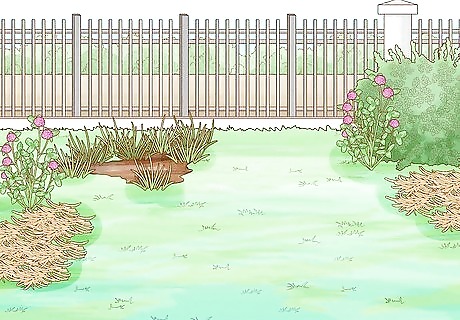
Let it get a little wild. If your grass is close-clipped, every stick has been picked up, and there's not a muddy spot to be found, bees will have trouble finding a home in your yard, no matter how many wildflowers you plant. Bees are wild creatures who need a wild habitat to thrive. If you want them to take up residence in your yard, do the following: Allow for some open, meadow-like spaces in your yard and garden. Leave an area un-mowed and let wild clover grow. If you don't have clover in your yard, scatter some white clover seed over the area in the fall. Leave a small brush pile and some leaves lying where they fell. Bees will use them to make a home. Leave patches of exposed dirt that turn to mud when it rains. Some bees live underground and will thank you for access to the mud they need.
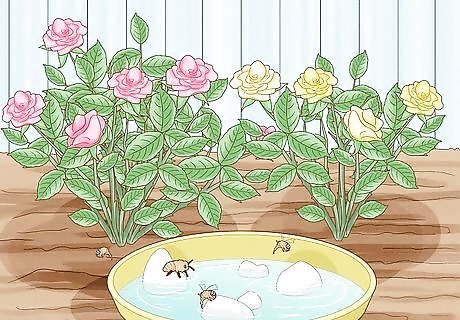
Make a bee bath. Bees have trouble using birdbaths, because they aren't able to land in deep water. They need an island to land on so they can walk to the edge and take a drink or a bath without drowning. To make a bee bath, take a wide, shallow dish or tray and line the edges with flat rocks. Pour water over the rocks and into the bottom of the tray. Place it in your garden near the flowers that attract the most bees. The bees will be able to land on the rocks and access the water.
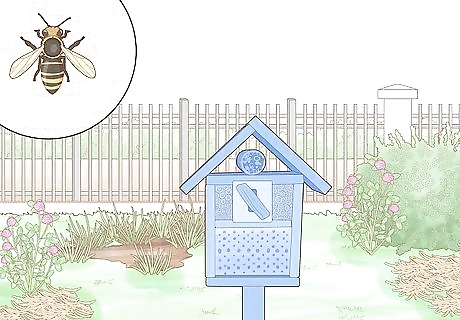
Provide a bee shelter. Rotting vegetation and stumps are great shelters for bees. More and more backyard gardeners are installing hives and other bee shelters to provide nesting spots for bees. If you're serious about attracting bees to your yard and helping them thrive, this option might be something to consider. You can start by building a small bee "house" using the following method: Take a small wooden box and paint it a bright color, preferably white, yellow, bright blue or purple. Use organic paint so the bees won't get sick. Layer the box with nesting tubes, standing them upright. You can buy them from a garden store or make your own by rolling brown craft paper around a pencil, pinching off the end and holding it together with tape, leaving the ends open. Fill the box to the top with these tubes standing upright, so that the exposed holes are open for the bees to climb in. Turn the box on its side. Be sure you've used enough tubes so that they don't slip out when you move the box. Hang from a tree or a post at eye level in an area sheltered from rain. Dig up an area of the ground nearby to expose dirt and clay the bees can use to build their nest.
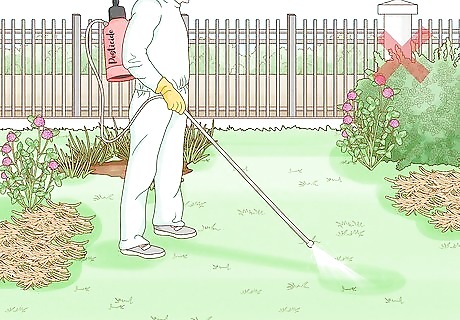
Stop using pesticides of any kind. Bees are susceptible to pesticides and other chemicals sprayed and used in gardens. Aim to have a pesticide-free garden and use pest-ridding remedies that are natural and not reliant on chemicals. If you do spray plants, only do so after dusk, when pollinators are least active, avoid using chemicals known to harm bees. Integrated pest management combines many different methods of pest control to reduce the need to use pesticides. Research integrated pest management methods to find the right system for your yard.
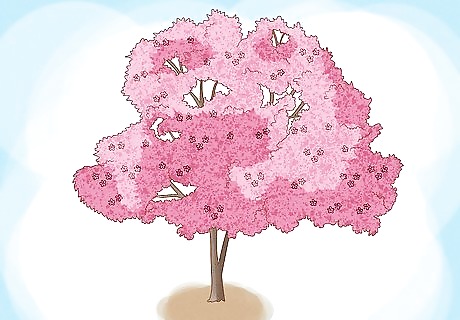
Plant flowering trees to attract bees. Trees provide large amounts of food for bees when they are in full bloom. They are also a beautiful addition to the landscape. If you are in North America, some good trees include: American Basswood Southern Magnolia Sourwood Redbud Crabapple Locust Serviceberry Tulip Trees
















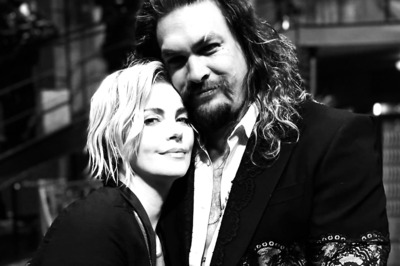



Comments
0 comment